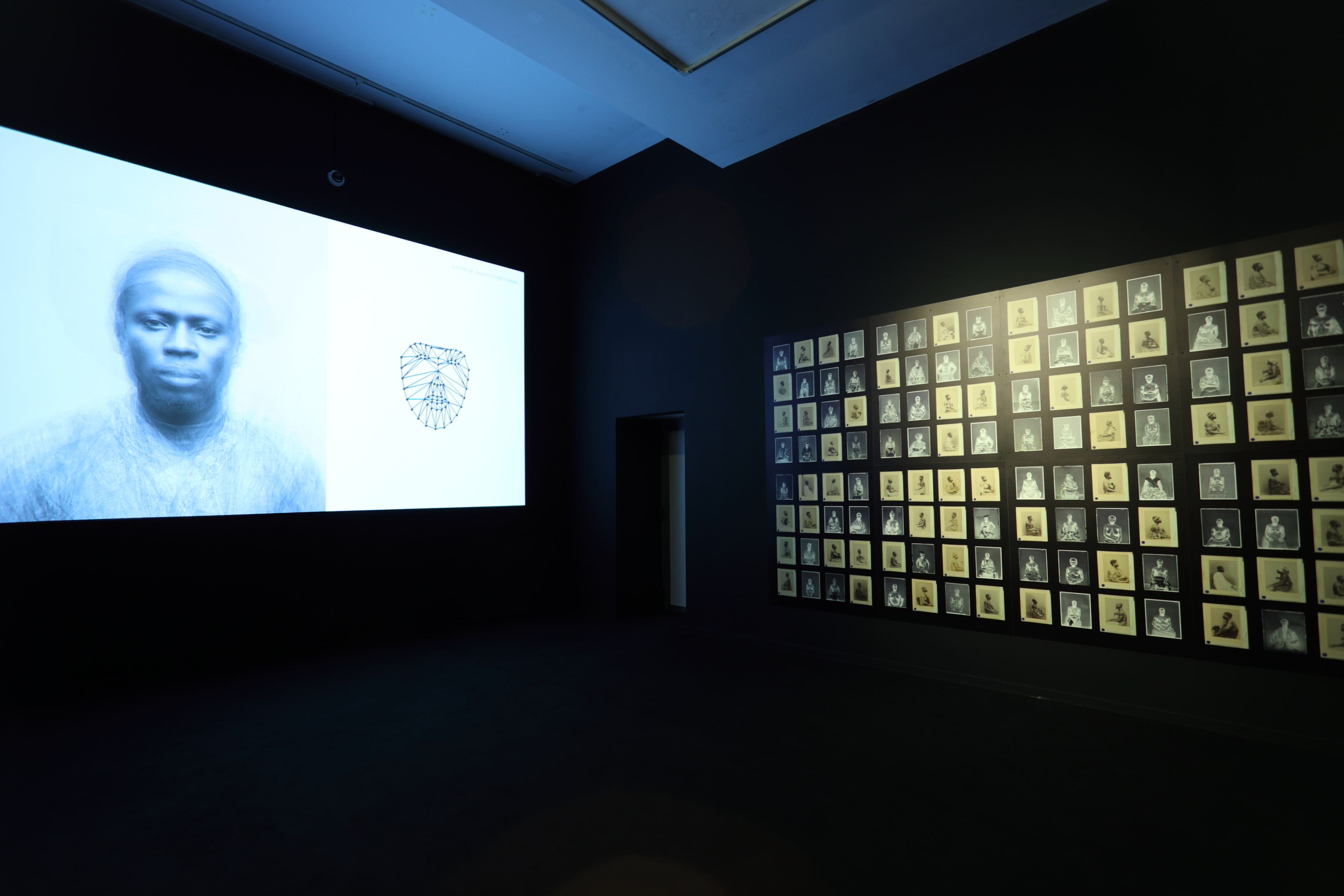
Nowadays, biometrics is still the most popular border control technology, which is a reflection of the concern to identify terrorism in the surface of faces. This reminds us of those pseudoscientific efforts of 19th Century Anthropometry to ideologically identify and delimit the space of the Other. This is the case of the portraits by Francis Galton, which offered the ideal image of a racial type, an alleged empiric manifestation of mathematical language and photographic automatism.
Galton developed his method in 1877 and one of its implementations was to build a criminal-type image which would help in heritage studies and racial improvement. Galton, in his search for optical apotheosis, tried to raise the initial nature of the photograph in the symbolic matter, thus formulating a general law (1). The composite portrait technique consisted of superimposing several portraits of the same type at random (racial, criminal, hereditary), re-photographing each negative with proportional light exposures, resulting in a blurred and generic portrait that was intended to be the translation into images of the Gauss Bell.
In collaboration with Anthropology researcher Hasan G. López Sanz, we were able to demonstrate that the Galton system presents a basic error that allows us to question the common sense of race: if the images of the composite portraits are exposed in a different order than "normal", the results differ. In this way, there is no longer a unique and ideal image of the racial type, but as many as permutations can be made with the photographs used.
On the basis of this contradiction and using the same language game used by Galton, we have created a programming that calculates and visualises in real time each of the 6.402.373.705.728.000 differently composed portraits of Africans from the Dahomey Kingdom (Benin Republic) and the Paï-Pi-Bri group (Ivory Coast). These raciological portraits, deliberately given for this project by the Museé du Quai Branly from Paris, were made by Roland Bonaparte (member of the Anthropology Society of Paris) on the occasion of the ethnographic exhibitions of 1891 (Dahoméens) and 1893 (Paï-Pi-Bri) in Paris. Thus, the idea of the collapsed archive promised by Galton's system is dismantled, returning to an archive of new and innumerable inapprehensible images, showing the impossibility of the type, whether criminal or racial.
"The Defeat of the Face" establishes a dialogue between the optical physiognomic systems of the 19th Century and the current border biometrics technology, where the ideology of the photographical archive, through our new technologies of visualisation and inscription, is still effective to exert power based on knowing the bodies. In order to present this comparison, another tracking facial programme that calculates the biometrics diagram in real time of each simulated face generated by the first software. This detects the differences between the composed portraits, as if it were an analysis of real faces. This way, we aim to highlight the endemic failure of optical and computational technologies that are used with our efforts to face the Other.













